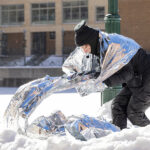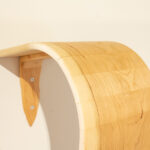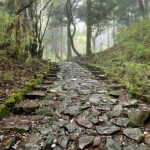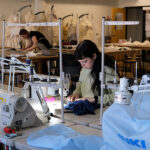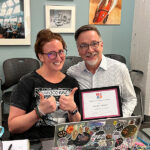Foundations Plugged and Unplugged
This panel will look at how courses are building traditional skills and aesthetics based on historical precedents and techniques and evolving those skills and techniques by incorporating new technologies such as digital imaging, and video. Foundations must look to the future where digital technology has a place in the studio alongside traditional tools. Making "connections" between disciplines is essential for students to become fluent in a contemporary visual language. The panel will examine how transitions to new technologies and techniques are incorporated into the curriculum. What is the visual imagery being produced and how does it reflect the new generation of art and design students?
Chair: Mark O’Grady, Chair of Associate Degree Programs
Affiliation: Pratt Institute
Contact: mogrady@pratt.edu
Reflections of an Endangered Species: The importance of traditional studio training in an age that privileges collaborative, cutting-edge programs of non-hierarchical, contextualized, interdisciplinary, integrative, theory dependant, multi-cultural, issue oriented, community sensitive, multivocal, technologically oriented, intermedia studies that sometimes include a visual component.
This panel is intended to bring together participation from both critics and supporters of the new wave of changes currently taking place in foundations curricula across the country. The panel will call to question the notion that traditional teaching strategies need to be “re-think-ed” because of the millennial generation’s lifelong exposure to digital technology. Has this exposure fundamentally altered what twenty-first century art students need to learn and the way they need to learn it?
Chair: Brian Curtis, Head of Drawing
Affiliation: University of Miami, Florida, Department of Art and Art History
Contact: b.curtis@miami.edu
Studio Art Textbooks – Remnants of Past Tools for a New Generation
This panel will discuss the use of textbooks in foundation art and design courses. Presentations may also address the question if other forms of delivering information are more effective. In the traditional academic world the sign on the road to tenure has often read: publish or perish. Who uses these next textbooks and how are they being used? In today’s modern world of the Internet and other virtual entities are textbooks still viable? Do studio based courses need a textbook? If so, how should they be used? Should new forms of instructional materials be invented to keep pace with our digital, technical world? Have pod casts and the Internet replaced the printed page? This panel seeks speakers that will help us define the role and use of the textbook in today’s studio art course.
Chair: Steven Bleicher, Chair, Visual Arts Department
Affiliation: Coastal Carolina University
Contact: bleicher@coastal.edu
Technology, Inquiry, and Anything Goes! New Approaches to Teaching Foundations Art History
This session proposes that the evolving pedagogy of teaching art history survey and the availability of technology have led to new approaches to teaching art history survey. No darkened lecture halls with rote memorization: today’s students are expected to fully interact with the works of art from an historical, cultural, and artistic approach. This in turn, has broadened the educational opportunities for both students and teachers. The session seeks papers that show creative ways of teaching foundations art history with regards to issues of technology, inquiry, and teaching techniques.
Co-Chairs: Chris Szczesny-Adams, Assistant of Art History
Natanya Blanck, Assistant of Art History
Affiliation: Milwaukee Institute of Art & Design
Contact: cadams@miad.edu
nblanck@miad.edu

